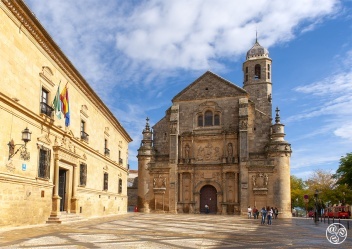Ubeda
Ubeda (pronounced OO-bay-da), with its wealth of Renaissance palaces and churches, has much in common with its counterpart Baeza. The outstanding feature is the monumental square, the Plaza de Vázquez de Molina, surrounded with imposing buildings such as the Palacio de las Cadenas
